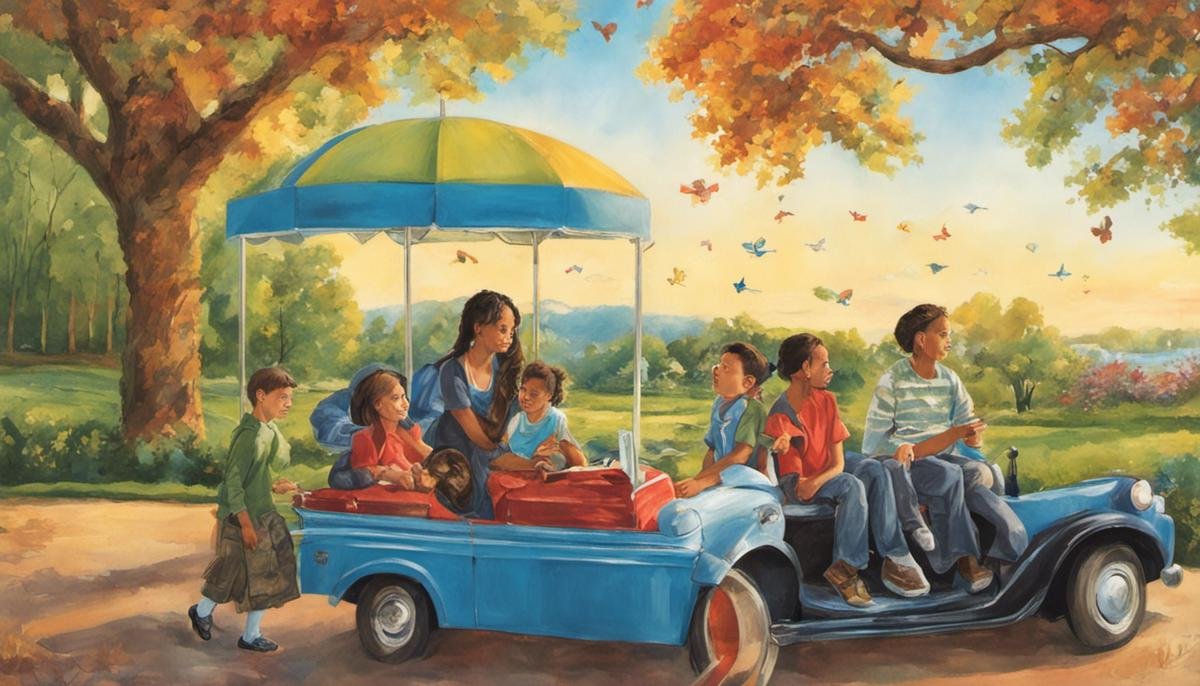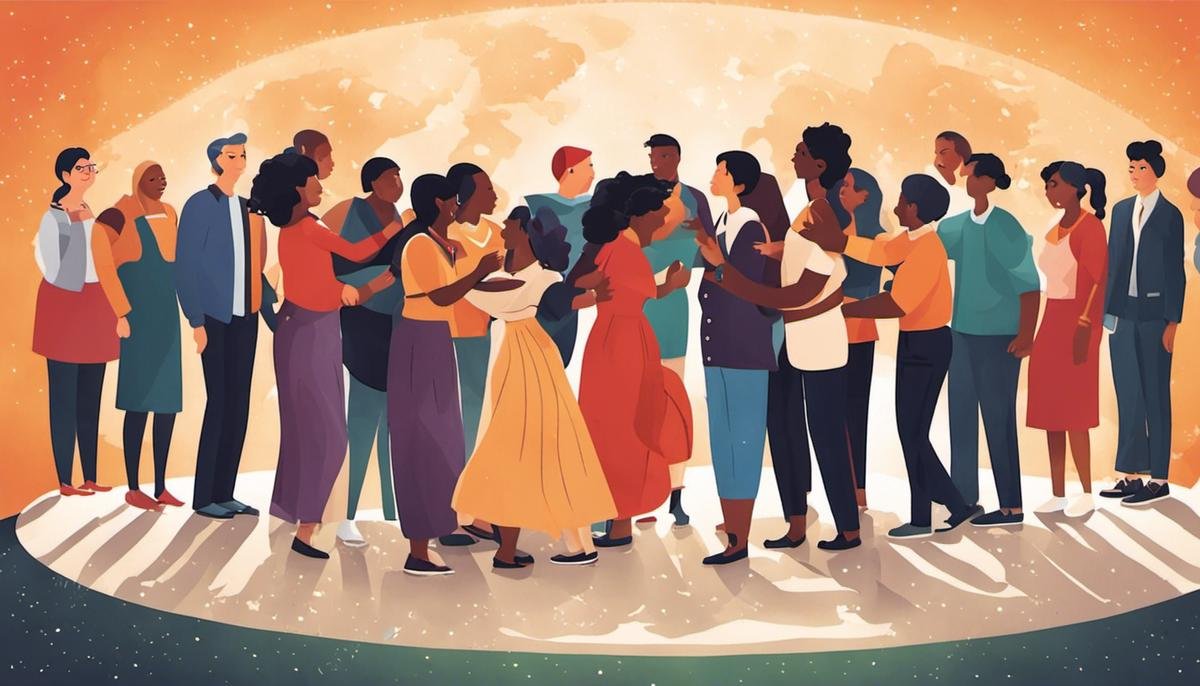
The understanding of Autism Spectrum Disorder (ASD), a complex neurodevelopmental disorder, has grown significantly over recent years. It is fundamental to approach the issue with sensitivity, understanding its diverse nature and how it impacts individuals differently. Recognizing the characteristics and symptoms of autism, as well as acknowledging the varying manifestations in each person, forms the first step towards comprehensive understanding. However, societal understanding and acceptance of autism often fall short due to myths and misperceptions, with media portrayals often exacerbating the issue. This wide-reaching exploration of autism delves not only into its medical and technical aspects, but also sociological attitudes, family dynamics, and the way forward towards a more empathetic, inclusive community.
Understanding Autism Spectrum Disorder: What is it?
Unmasking Autism Spectrum Disorder: A Parent’s Guide to Understanding
Autism Spectrum Disorder, known commonly as ASD, is a term that holds a lot of mystery and potential misconceptions for many. It’s a common topic of conversation in several parenting forums, PTA meetings, and pediatrician’s offices. Still, a lot of questions linger in the minds of many. So, what exactly is Autism Spectrum Disorder? Let’s uncover the truth together.
At its core, Autism Spectrum Disorder is a neurological and developmental disorder that primarily impacts communication and social interaction. It begins early during childhood and generally lasts throughout an individual’s life. However, it’s crucial to remember that ASD is called a spectrum disorder for a reason – this implies a wide-ranging continuum, which means no two people with ASD exhibit identical symptoms or severity.
Individuals with ASD commonly face challenges in social situations. They may struggle with understanding and interpreting other people’s emotional states or intentions. Additionally, they may find difficulty in expressing their own emotions or maintaining a conversation. This doesn’t mean they aren’t capable of forming meaningful connections. Instead, they have their unique way of experiencing the world around them!
Often, folks with ASD may have deep interest in specific regions. For example, they might show remarkable knowledge of airplane types or dinosaurs – knowledge that seems overwhelming or extraordinary to us. While their intense passion can be awe-inspiring, they might struggle with more conventional learning situations or courses.
Just as no two people are alike, neither are any two individuals with Autism Spectrum Disorder. Some may live entirely independently; others may require substantial support in daily activities. Parents and caregivers can guide their loved ones in seeking professional help to manage the challenges their child faces, ensuring they lead a fulfilling life. Above all, love, acceptance, and understanding play a crucial role in the lives of those living with ASD.
It’s also imperative for parents and caregivers to remember that early intervention can make an enormous difference. Timely diagnosis and suitable therapies have shown promising results in managing many of the challenges one may face due to ASD. Assistance can come in many forms, including behavioral therapy, speech therapy, occupational therapy, and various social skills training.
Autism Spectrum Disorder may seem like a daunting diagnosis, but it’s far from a life sentence. Many individuals with ASD grow to be successful, independent adults, and contribute positively to society in unique ways. It’s all about harnessing their potential and celebrating their unique gifts.
When navigating through the journey of raising a child with ASD, remember that it’s a voyage – a trip where one will witness some beautiful sunsets and brave a few storms. Yet, with the right knowledge, resources, and relentless support, this journey can be both rewarding and awe-inspiring. Indeed, at every stage of this voyage, love, resilience, and understanding light the guiding beacon.
Remember, Autism Spectrum Disorder sheds a different light on the world, offering a fresh, captivating perspective. It is not about ‘fitting in’; instead, each individual brings their distinct, vibrant colors to the rich tapestry of life. Hearts filled with kindness, patience, and acceptance are the cornerstone of giving individuals with ASD the life they deserve. After all, isn’t the myriad of human experiences what truly makes our world fascinating and fulfilling?

Shifting Perspectives: Autism in Contemporary Society
Title:
Unmasking Misconceptions about Autism in Today’s SocietyIn modern society, our understanding and perception of Autism Spectrum Disorder (ASD) has certainly evolved for the better. But, we still have a long way to go. Although people are more aware of ASD than ever, autism is often misunderstood, stigmatized, and misrepresented.
One can’t argue that the portrayal of autism in media and popular culture has significantly increased, but it’s often stereotyped, painting a skewed perception of what it means to be on the spectrum. The characters depicted are usually male, exceptionally gifted, and emotionally detached. While there indeed are individuals with ASD fitting this mold, the overwhelming variation goes unnoticed, reinforcing the old adage, “If you’ve met one person with autism, you’ve met one person with autism.”
Similarly, society often looks at autism through a deficit lens, focusing more on the limitations rather than the unique strengths and abilities of individuals with ASD. For example, individuals with autism may have an exceptional attention to detail or a unique perspective which is an asset in many professions and hobbies. It’s essential we recognize the potential hidden behind these perceived deficits.
Moreover, the perception that autism needs to be ‘fixed’ or ‘cured’ is unfortunately still prevalent. However, many self-advocates in the autism community stress the importance of acceptance over a cure. They argue for society’s need to understand and respect neurodiversity – the concept that neurological differences like autism are a natural part of human variation.
Unfortunately, many parents with autistic children report experiencing negative attitudes and exclusion. This reveals a gap in societal understanding and acceptance of autism, a hurdle in fostering inclusive communities. It further emphasizes that the battle isn’t just with the disorder but with prevailing prejudices too.
Lastly, the voices and experiences of autistic adults are often overlooked. The dialogue around autism tends to center around children and their families. But autism is lifelong. Autistic adults have unique insights, experiences, and wisdom to share. It can be a game-changer in shifting societal perspectives and developing truly inclusive policies and practices.
In conclusion, though society’s understanding and perception of autism have improved, it’s vital to continue to challenge stereotypical portrayals and misconceptions. It’s about sculpting an all-embracing society that not just tolerates, but celebrates the spirit of neuro-diversity. As we continue to strive in our journey of understanding autism, remember the wise words, “Understanding is the first step to acceptance, and only with acceptance can there be recovery” (J.K Rowling). We say recovery – not from autism, but from misunderstanding and stigma. It’s time we look beyond the labels and embrace the individual.

Unraveling Autism Myths: Common Misunderstandings Debunked
Autism Spectrum Disorder (ASD) is often shrouded in misunderstanding, which can lead to mistaken viewpoints and uninformed stereotypes. One common belief lies in the media’s portrayal of autism. You’ll often find ASD is depicted with a certain uniformity, suggesting every person with autism presents the same traits and behaves in the same way. In reality, the expression of autism is diverse, reflecting the adage, “If you’ve met one person with autism, you’ve met one person with autism.”
Another key misunderstanding is the overemphasis on deficits rather than focusing on the strengths and abilities of individuals with ASD. Assumptions may be made about activities or skills they “can’t” do based on their diagnosis. However, people with autism can have impressive skills and talents, these may not always be obvious but their presence suggests that we need to nurture these strengths rather than focusing solely on limitations.
An additional misconception is that autism needs to be “fixed” or “cured”. This viewpoint can create unnecessary pressure on individuals with ASD to fit into social norms. It’s essential to remember that autism is a part of the person’s identity and not a disease. Acceptance, accommodation, and understanding can make a substantial difference in the lives of people with autism and their families.
Negative attitudes and exclusion can be a frequent experience for parents raising children with autism. Parents can sometimes be blamed or shamed for their child’s behavior without an understanding that ASD can affect how children communicate, respond, and behave. These families deserve our concern, support, and friendly understanding.
Often, the voices, opinions, and experiences of autistic adults are overlooked. They have valuable insights that can guide professionals, parents and society to better support them and children who are still navigating the world of ASD.
It’s also crucial to foster a sense of acceptance and work towards creating inclusive communities where those on the autism spectrum feel valued and heard. This can be as simple as making an effort to encourage participation from everyone, being patient and kind, and educating ourselves and others on ASD.
Lastly, embracing the concept of neurodiversity is fundamental. Neurodiversity is the appreciation of the variety of differences in brain function and behavioral traits. It advocates for viewing people with differences, such as those on the autism spectrum, as unique individuals rather than diagnosing them as disordered. Celebrating individuality within the context of neurodiversity paves the way for acceptance, understanding, and belonging.
In conclusion, these misunderstandings contribute to a world that can feel isolating and challenging for individuals with autism and their families. It is our collective responsibility to challenge these misconceptions and work towards a more informed and inclusive society.

Family and Autism: Impact and Support
Autism Spectrum Disorder, or ASD, is a diagnosis that brings about wide-ranging effects on families. Just as symptoms of ASD can span a broad spectrum, so too does the impact upon loved ones. Families may have experiences that run the gamut, from inordinate challenges to profound joys. It’s as unique as the individuals with ASD themselves, and there’s not a “one-size-fits-all” answer. Still, understanding these effects can bring greater empathy, foster better support, and strengthen the family unit.
Generally, families having members with ASD often face a significant time investment for the child’s needs. This time commitment can range from paperwork to therapies, medical appointments, educational meetings, and more. The demands may affect traditional family structures, where one parent might need to leave employment to prioritize care-giving. It’s vital to find a safe, reliable support system – be it friends, family, or respite care – to help carry this load and to avoid caregiver burnout.
Since ASD can influence social interactions, siblings may also start to feel the strain. A sense of jealousy or resentment may inadvertently creep in as they watch the unequal distribution of attention and resources. Encourage dialogue; open communication can help everyone comes to terms in their own time. Including siblings in therapy or activities, explaining what ASD is and how it affects their brother or sister, and maintaining one-on-one times for each child can foster a better understanding and familial unity.
Moreover, the financial implications are another aspect. Costs for medical appointments, therapies, special education, medications, or even home adaptations can be substantial. Even with health insurance, out-of-pocket expenditures may still be significant. Budgeting, applying for grants, and finding local resources can be a lifeline in managing these expenses.
However, amidst these challenges, there are silver linings. Families often remark about how their family member with ASD has taught them patience, acceptance, and unconditional love. They celebrate small victories which many take for granted. They gain a new perspective on what truly matters in life, embracing the beauty of uniqueness. These families also tend to form a close-knit community, offering invaluable support, understanding, and shared experiences.
Beyond the protective walls of family, society plays a vital role in providing support and acceptance. Community inclusion fosters a culture of understanding, compassion, and empathy for all, including those with ASD. Employers, schools, and local organizations that cultivate this culture push back against stereotypes, embrace diversity, and provide opportunities for individuals with ASD to thrive. This transformation in societal perception is gradual but pivotal for progressive changes.
Education is the cornerstone of this societal change. It starts with debunking myths, unlearning biases, and promoting understanding of ASD. With this knowledge, society can move from tolerance to acceptance and from indifference to inclusion. This improved societal attitude helps reduce the stigma, lessening the emotional burden on the families and, importantly, the individuals with ASD.
In summary, a diagnosis of Autism Spectrum Disorder sends ripples of change through a family’s life. Families affected by autism face their share of trials – but they cherish moments of triumph and joy just as profoundly. Every family’s journey is distinct. However, through collective efforts from families, communities, and societies, the aim remains to devise a path where the individual with ASD feels understood, supported, and valued.

Community Action: Building an Inclusive Society
Creating a more inclusive society for individuals with autism is a collective responsibility. This process begins right at home with the family and extends to every pillar of society.
Let’s dive right into how we can make this difference.
Education plays an incredibly significant role in this change. More than just academic institutions, all learning environments, including homes and workplaces, can help change perceptions about Autism Spectrum Disorder (ASD). Education systems should aim to include information about ASD in their curriculum. Knowledge helps us dissolve any fear or hesitation we might have about the unknown.
Moreover, reducing the stigma associated with ASD is key. This starts in the media. Media outlets need to present a realistic and respectful portrayal of individuals with ASD. Sensationalism or stereotyping only fosters more misconceptions. By earmarking airtime to positive stories and achievements of individuals with ASD, media can play a crucial role in transforming societal perceptions.
Additionally, right resources and support should be made available to families with members with ASD. This not only includes therapies and interventions but also resources to help them manage financial implications. Helping families access public and private funds can alleviate some financial strain.
On that note, it is important to talk about siblings of individuals with ASD. They, too, are significantly impacted by the time commitment and challenges of ASD. Open communication is essential to ensure they do not feel overlooked or neglected. Regular family discussions can help everyone understand the situation better and boost family solidarity.
An inclusive society is the one that values all its members. Community services, local businesses, and public establishments should aim for inclusivity by making their spaces autism-friendly. This could be as simple as offering quiet shopping hours, or providing sensory maps for events.
Public services should also cater to the needs of individuals with ASD. Transportation systems, for example, could offer training to staff in understanding the needs of passengers with ASD. As a society, we need to commit to complete inclusivity.
Ultimately, to build an inclusive society for individuals with autism, we need to shift our focus from their disabilities to their abilities, from their deficits to their strengths.
Rather than focusing on what individuals with ASD can’t do, let’s celebrate what they can. This positive perspective allows them to contribute and thrive in society, leading fulfilling lives.
Embrace neurodiversity. Accept different ways of thinking, learning, and viewing the world. After all, diversity is the spice of life, and every individual brings a unique flavor to the mix. Together, we can build an inclusive society that appreciates these unique contributions and the color they add to our world.

Understanding autism is not simply about recognizing symptoms and characteristics, but about breaking down barriers, debunking myths, and changing attitudes. It is about supporting those with autism and their families, equipping them with tools and resources for a better quality of life. In an era where societal walls of intolerance are slowly being dismantled, fostering inclusivity for individuals with autism is a significant stride towards a more understanding and accepting community. Every contribution, no matter how small, can make a difference. We have the power to build a society where everyone, including those with autism, can thrive, thereby enhancing our collective empathy, harmony, and productivity.




